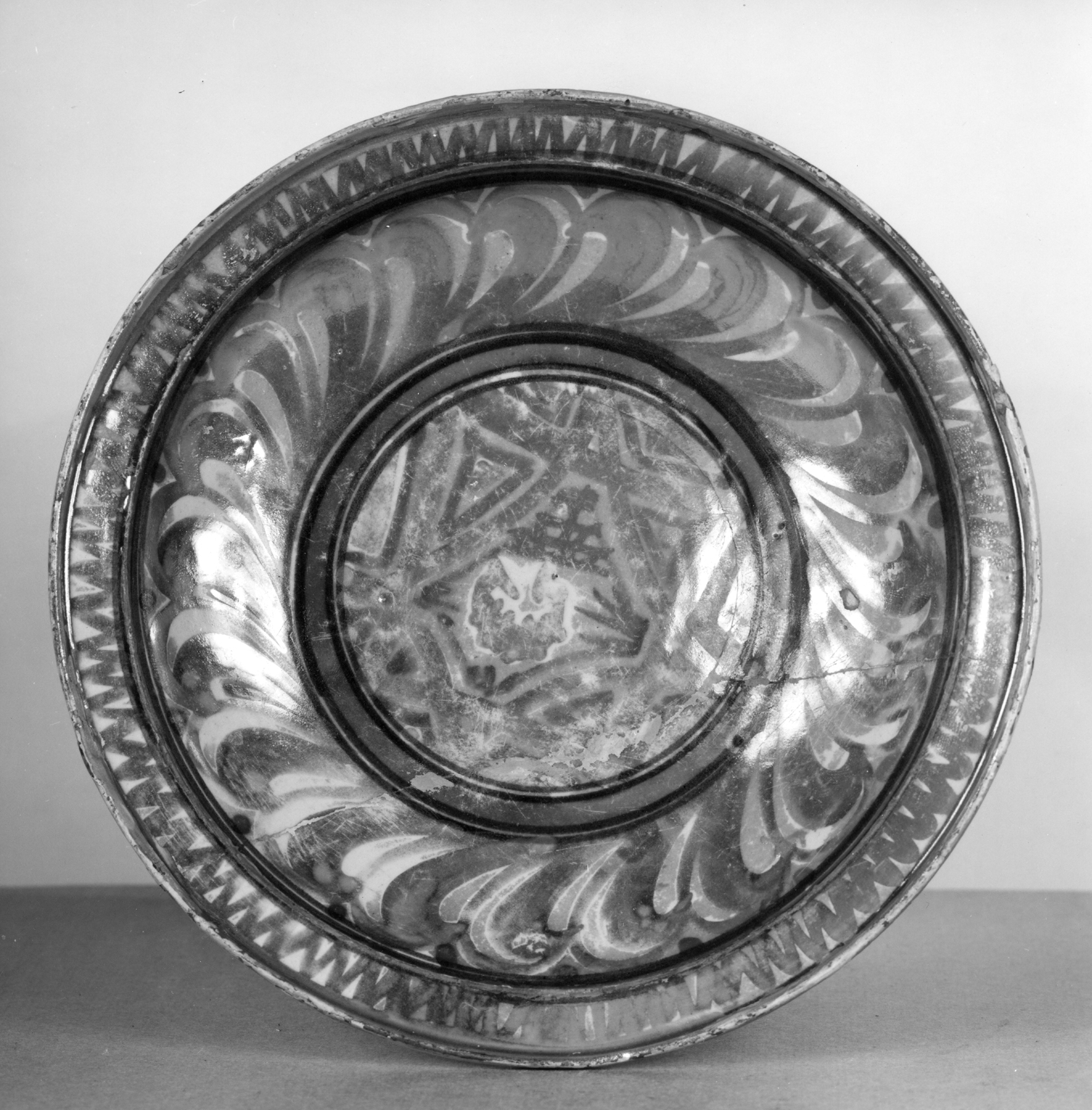Small Dish with Geometric Ornament
(Renaissance Europe )
The entire dish is painted in gold and ruby luster, a practice influenced heavily by imported potteries from Spain during the fifteenth and sixteenth centuries. It was likely produced in Gubbio, a center of maiolica production that was renowned for its luster wares during the Renaissance.The center of this dish is painted with a band of concentric circles that frame a diamond set within a square. The second ring is decorated with a repeating pattern of gadroons, and the outermost ring with a raised edge displays a continuous zigzag line. Four luster spirals are painted onto the back. For more on the luster technique, see 48.1320; for more general information on “maiolica,” see 48.1336.
Provenance
Provenance (from the French provenir, 'to come from/forth') is the chronology of the ownership, custody, or location of a historical object. Learn more about provenance at the Walters.
Henry Walters, Baltimore [date and mode of acqusition unknown]; Walters Art Museum, 1931, by bequest.
Geographies
Italy, Gubbio (Place of Origin)
Measurements
1 13/16 x 7 3/4 in. (4.6 x 19.7 cm)
Credit Line
Acquired by Henry Walters
Location in Museum
Not on view
Accession Number
In libraries, galleries, museums, and archives, an accession number is a unique identifier assigned to each object in the collection.
In libraries, galleries, museums, and archives, an accession number is a unique identifier assigned to each object in the collection.
48.1363


